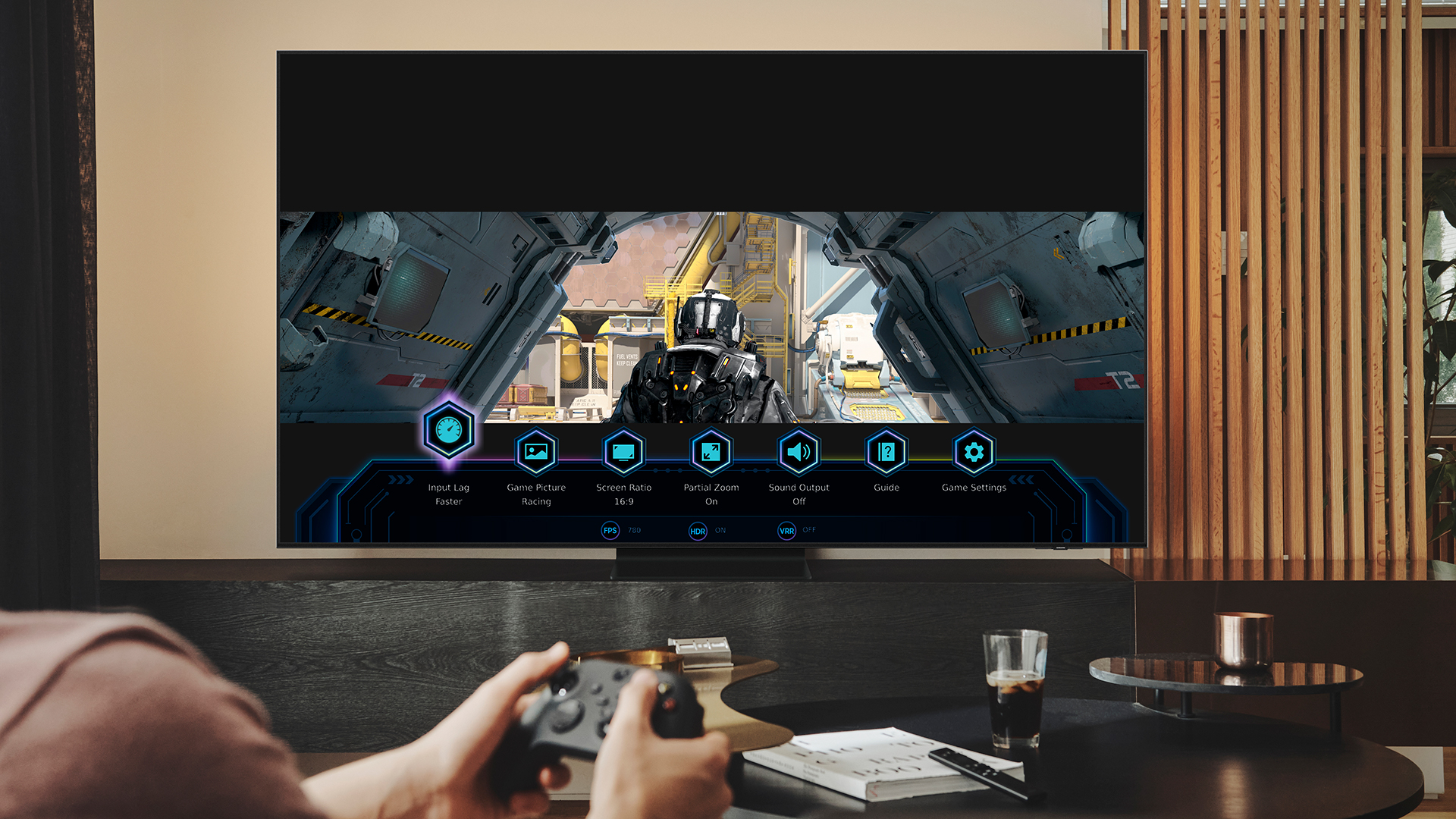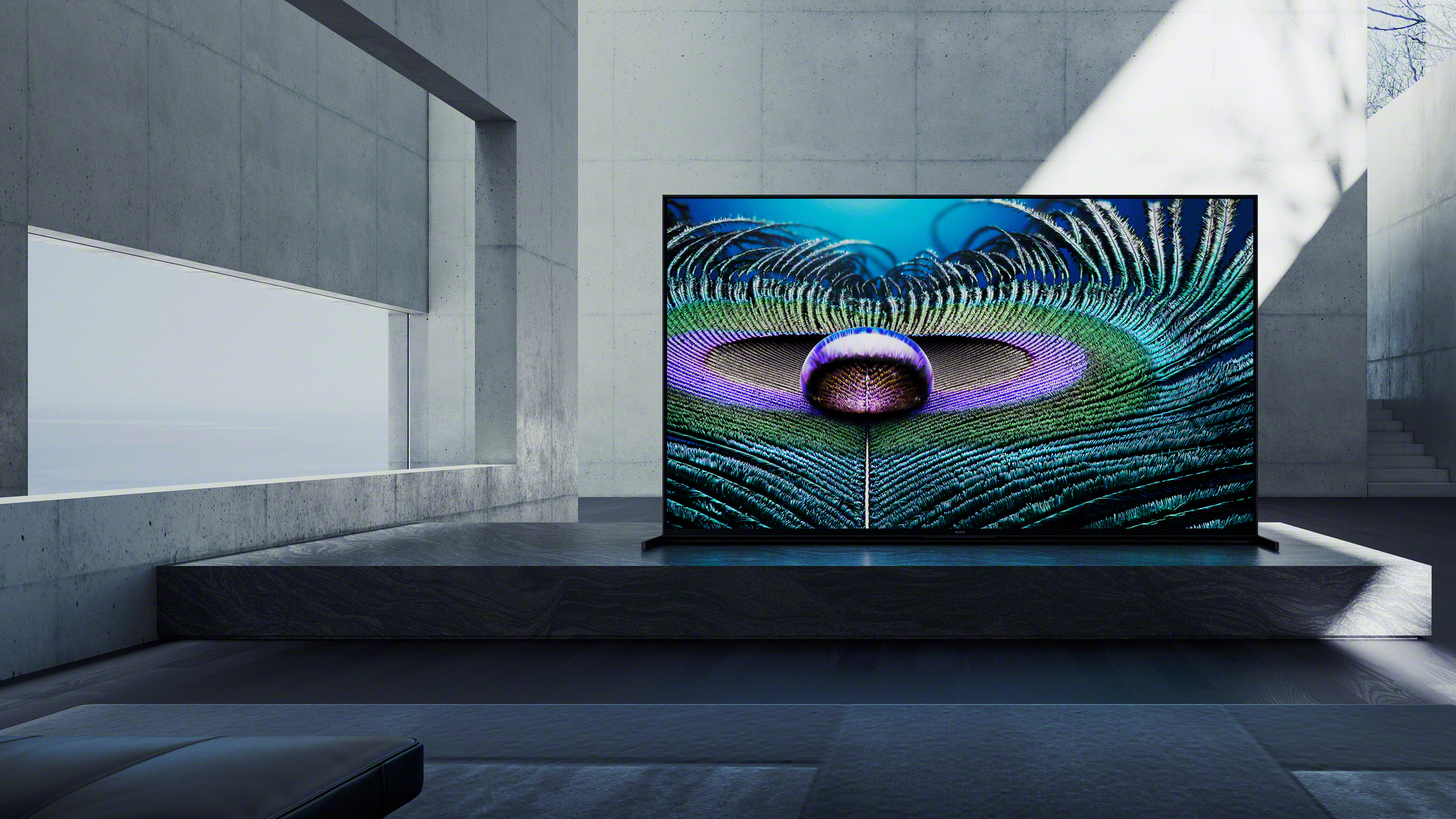Variable Refresh Rate (VRR) explained: Why this PS5 & Xbox feature is big news
Here's why VRR means smoother gaming, and what hardware supports it


Shopping for a new TV can get pretty confusing, there's so much jargon floating about, especially when you're hunting for one of the best gaming TVs. You might have seen the acronym VRR listed on the specs and features, but what exactly does that mean, is it really necessary and how do you know which TVs have it?
VRR stands for 'Variable Refresh Rate'. It has featured in PC gaming for a number of years and has been supported by the Xbox Series X and Xbox Series S since their launch, too. It took Sony a bit of time to catch up but they finally caught up and announced they'd be switching it on in 2022 for PS5 users.
This new generation of consoles means that HDMI 2.1 ports are becoming more common in the best TVs for all budgets. HDMI 2.1 brings in support a number of new gaming features, including 4K 120Hz, Auto Low Latency Mode (ALLM) and, importantly, VRR. Technically, VRR doesn’t actually demand HDMI 2.1, but HDMI 2.1 support is a good indicator that your TV can handle it because it's part of the standard.
Importantly, VRR has to be supported by every part of the chain in order to make the most of the feature. Your console or PC needs to have VRR, you need to be using an HDMI 2.1-compatible cable, and your TV or monitor port also needs to be able to support it – as most of the models in our list of the best TVs for PS5 do.
Let’s break down the details to help you understand everything you need to know about it.

The LG C2 OLED is a superb gaming TV that supports VRR.
What is VRR?
VRR is short for Variable Refresh Rate. This means that it allows your screen to adjust how often it refreshes the image to match the frame rate from your console or PC. This is the reason that it’s really only gaming that demands VRR. When you’re watching a movie or TV show, those have a set frame rate which is usually 24fps, 25fps or 30fps. While higher frame rate movies and TV do exist, they're rarely available for home release, and even then having a set refresh rate means that your TV knows how often to refresh and you’ll get a smooth experience that means you never even need to think about it.
Gaming, however, changes that. When you are gaming, frame rate is entirely dependent on how hard your graphics processor is working. A cut scene of two characters talking will be very different from running across the rooftops of a snowy city of Vikings for example. This can cause frame rates to constantly fluctuate, even if if by only a few frames per second – however, the TV still wants to only refresh at a set rate, meaning that the moment that the console creates a new frame and the moment that the TV wants to display one may not be the same moment. They're out of sync, and that means you might see a half-finished new frame mixed with the old one.
Get all the latest news, reviews, deals and buying guides on gorgeous tech, home and active products from the T3 experts
Screen tearing is the name for these tell tale lines across your monitor or screen when it can’t keep up with what the console or PC is sending over. Here's a video demonstrating all of this in action.
In the past, consoles games have skirted this issue as much as possible by locking their frame rate to match the refresh rate of TVs. But this puts limitations on what games can do – it makes the frame rate the priority, so developers might have to make things less ambitious just to hit that magic refresh number.
The solution? Variable Refresh Rate, which basically mean that instead of the TV refreshing on its own schedule, it adjusts on the fly to match whatever the console's current framerate is. No more screen tearing!
On PC, for several years AMD and Nvidia have their own proprietary VRR technologies to get around this issue. AMD has FreeSync and Nvidia has G-Sync. Both G-Sync and FreeSync have made their way to TVs as well as gaming monitors. Support for both of these technologies, as well as the HDMI 2.1-standard VRR, is a big part of why the LG C1 is such a great gaming TV.
VRR and new-gen consoles
So if this has been around for years then why do we only care now when it comes to our living room screens? Well the arrival of the new generation Xbox Series X, Xbox Series S and PlayStation 5 consoles has changed the landscape.
Now that processors are significantly more powerful and questing for higher frame rates – both consoles have the capacity to output 4K gaming at up to 120fps – it doesn’t make sense to have screens not be able to make the most of this new buttery smooth world order. This is where VRR comes in, to adjust those frame rates on the fly.
But, crucially, the two next-gen consoles don't have identical VRR support. The PS5 supports VRR using the standard HDMI 2.1 implementation only, for example, with AMD FreeSync and Nvidia G-Sync not supported.
Meanwhile, Xbox Series S and Series X support VRR compatibility via HDMI 2.1 and with AMD’s FreeSync technology. As long as your TV or monitor has support for either of these, then you can make the most of a dynamically adjusting frame rate and reap the visual benefits of the new consoles running at full tilt.
Own PS5 and want to turn VRR on? Then read T3's how to enable VRR on PS5 guide.
TVs and VRR

The Sony A90J is the company's first OLED TV with VRR support built in.
Our list of the best gaming TVs includes all the latest screens you’ll want for your Xbox Series S or X and PlayStation 5 when it comes to VRR. It’s worth noting though that 2022 is going to be a very good year if you’re looking to upgrade.
Most of 2021's best TVs had HDMI 2.1 as standard, certainly at the flagship end of things, but it was rarer to find the technology in the best TVs under £1000 or best TVs under $1000. In 2022, that's improving, and lots of 2021's top TVs are now so cheap that you can get these features for a pretty reasonable price, but if you're on a budget, it's still very important to make sure you’re checking the connectivity before you buy.
It’s also important to note that HDMI 2.1 doesn’t officially guarantee VRR support, so do check the small print before you invest – in our gaming TV guide, we'll always make this clear, of course. Most companies are boasting of their gaming chops, though, so it shouldn’t be too hard to work out which screens have what you need… but do make sure.
- The best 32-inch TVs – perfect for bedrooms and offices
- The best 43-inch TVs – great entry-level 4K sets
- The best 48- to 50-inch TVs – beautiful mid-size 4K TV sets
- The best 55-inch TVs – premium TVs that still fit most living rooms
- The best 65-inch TVs – beautiful big-screen TVs
- The best 75-inch TVs – giant 4K and 8K TVs packed with features
Louise Blain is a journalist and broadcaster specialising in technology, gaming, and entertainment. She has a weekly consumer tech slot on BBC Radio Scotland and is the presenter of BBC Radio 3's monthly Sound of Gaming show. She can also regularly be found on BBC Radio 4, BBC Five Live, and The Evolution of Horror podcast as well as writing for GamesRadar and NME. Louise loves finding ways that tech can make our lives better every day and no, she doesn't have enough smart lighting yet.
